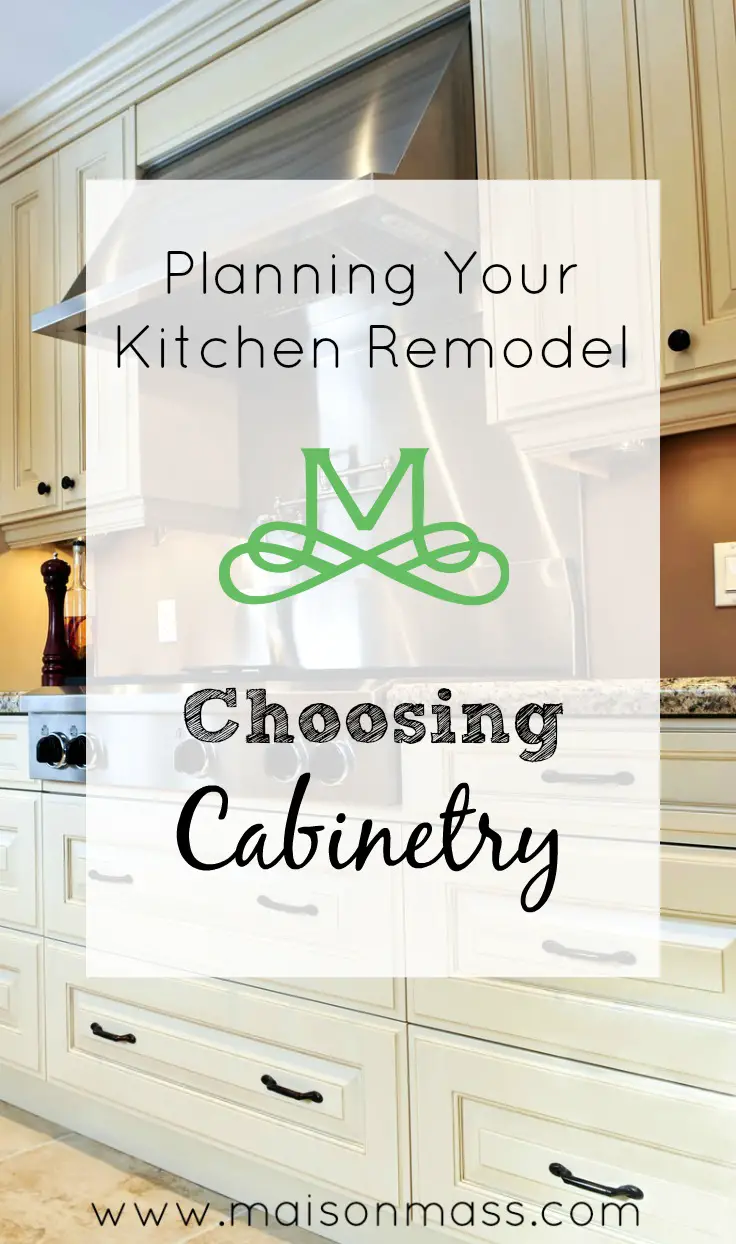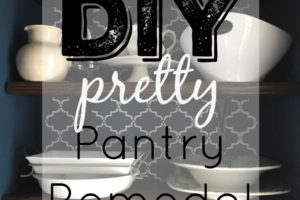One of the most important decisions you’ll make during your kitchen remodel – both aesthetically and financially – is choosing kitchen cabinetry.
Kitchen cabinets are the workhorses of the kitchen. They store our tableware, pots and pans, as well as dry goods and pantry items. In my house, they are in constant use – kids reaching into the pantry for the cereal box, me getting pots to cook a meal, everyone opening the silverware drawer over the course of the day for the needed utensil. With all that activity, you want to make sure you buy the best quality cabinets you can afford, make sure they function well for your lifestyle and, last but not least, look beautiful, because they really form the cornerstone of your kitchen design. So, let’s take a look at the three big considerations to keep in mind when choosing kitchen cabinetry.
Budget
Yes, we said that word again. As with any item you’ll be purchasing for your kitchen, figure out your budget for cabinetry before you shop – and stick to it. (If you missed our post on budgeting for your kitchen remodel, you can read it here.) Research from the National Kitchen and Bath Association shows that cabinetry and hardware costs are the single biggest line item in a remodel, making up roughly 30% of your total remodeling budget. Because the cabinets are so oft-used, this is not an area we recommend skimping on in favor of other design elements. Quality cabinetry will last longer and will work better for you in the long run.
The amount you have to spend will dictate whether you will be considering stock, semi-custom or custom cabinetry for your remodel. Cabinet prices go up with each jump in grade. But stock cabinetry does not mean poor quality – it just means the cabinets are made in larger quantities in “stock” or standard sizes. You will need to plan your room around what is available if this is the option you choose. There are pros and cons to each level of cabinetry and you can read more about them in our post on cabinet grades here.
Aesthetic
With a budget in mind, it’s time to turn to the look of the cabinetry. There are three main points to consider:
- Cabinet construction – there are two main cabinet construction styles (with a third emerging): framed and frameless. Framed cabinetry consists of a box with a face frame on the front of the box that the doors attach to. Frameless cabinetry, which is more of a European style of cabinetry, does not have a frame. The doors in this construction type attach directly to the cabinet box. There are benefits and drawbacks to each style and recently, looking to get the best of both worlds, the industry has developed a hybrid of the two. This new style combines the look of a more traditional framed cabinet with the space advantages of frameless. You can read more about framed vs. frameless cabinetry in our post here to help you make your decision. Know that when choosing frameless cabinetry, you do limit yourself to the door style you can choose, so keep that in mind as you read on.


- Cabinet Door Style – first, there are three main ways the doors lay or fit on the cabinet boxes: full overlay, partial overlay and inset. Each give a kitchen a different look and feel. With full overlay, the door completely covers the cabinet box. It gives a more modern, European feel to the cabinets. This is the type of door you’ll get with a frameless cabinet. With face frame cabinets you can still achieve a full overlay look, but you can also do a partial overlay or inset door. With partial overlay, the door lays on top of the face frame, but doesn’t fully cover it, leaving a space or reveal around each door. Typically face frames on cabinets measure around 1 ½” wide and the traditional door overlay is ½” leaving a 1” reveal around each cabinet door. To achieve a more modern look, in recent years cabinet makers have been shrinking the reveal down. Finally, with inset, the door is fitted perfectly into the face frame opening. This style gives an an old, vintage farmhouse charm that has come back in popularity of late.

Beyond how the door fits on the cabinet, there are different door styles that achieve different looks. Full overlay doors that are completely flat offer a modern, sleek aesthetic – these doors are often referred to as slab doors. Raised panel doors are a very traditional look and flat panel doors have clean lines but give a more rustic or farmhouse look. Beyond the panels, decorative beads can give doors a more formal or custom look – and a lot of these options are even offered in semi-custom cabinetry. Each cabinet manufacturer will have different styles and options. Take the time to determine what door style best fits with your kitchen design as well as the style of your home. - Finish – Once the door style is determined, you then choose the finish. The first choice is whether to go for a stained wood or a painted cabinet. The current trend, according to the National Kitchen and Bath Annual Survey, is for painted cabinetry over stained. White cabinets are a great choice to create a timeless kitchen; they simply do not go out of style. However, other colors are gaining share of the painted market including all shades of gray and dark blues. Mixing of cabinet colors is another popular trend – lighter uppers with darker lower cabinets, for example. There are options for glazes and other effects to achieve antiqued and French country looks, but these are also losing in popularity against solid color paints according to the survey.
Functionality
Once an overarching style is determined, you’ll then look at the actual cabinets that will go into your kitchen. NKBA recommends a minimum of 1400” of shelf/drawer frontage for basic storage needs. The reality is that with the plethora of modern kitchen gadgets most of us need much more storage than that. A good kitchen designer will help you maximize your existing space and can tell you about all of the storage options.
These days, most designers will recommend incorporating as many lower cabinet drawers as possible in a kitchen. Drawers, especially deep ones, give you more bang for your storage buck, especially for things like pots and pans. New options like magic corners make corner cabinets more efficient, pull out drawers within cabinets offer more functionality, and specialty cabinetry for things like spices and cutlery keep oft-used items close at hand and organized. The interior of plain cabinets can also be configured to best store your items. For example a cabinet can be outfitted with vertical separators to hold cookie sheets and baking pans upright and snug. Appliance garages can be used to hide large cooking gadgets from sight when not in use. And trash and recycling pull outs are a great way to keep the kitchen looking tidy. Cabinetry options and accessories will differ from manufacturer to manufacturer, but a good designer will be able to find the solution you need and retrofit from another vendor as was necessary in my kitchen, so don’t hesitate to ask about it if it is something you really want.
Choosing kitchen cabinetry may at first seem like a daunting task with all of the details to consider and the dollars at stake. But armed with a little knowledge, if you marry the choices available to you within your budget with your needs as a cook and homeowner, you will enjoy the selection process.
Good luck!
Kristen
For more in our kitchen remodel series:
Gathering Inspiration
Budgeting
Design Guidelines
Countertops
Backsplash













